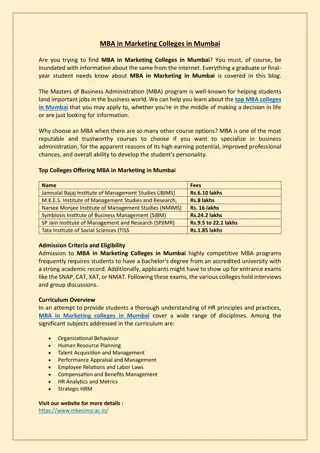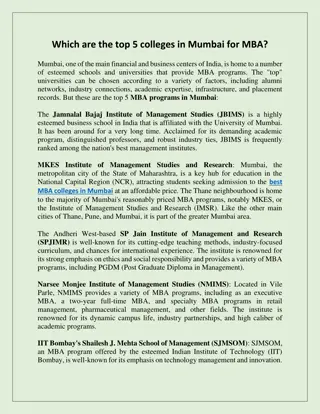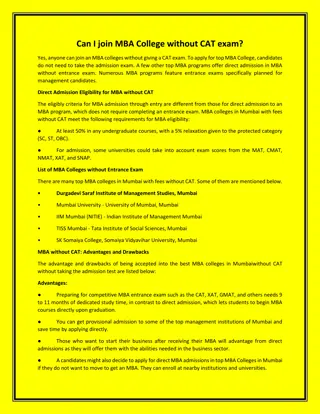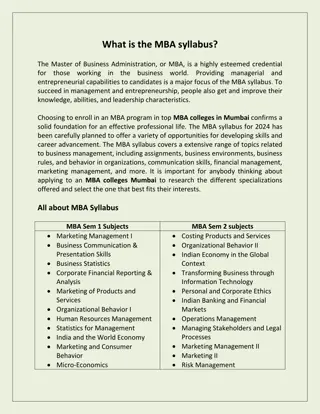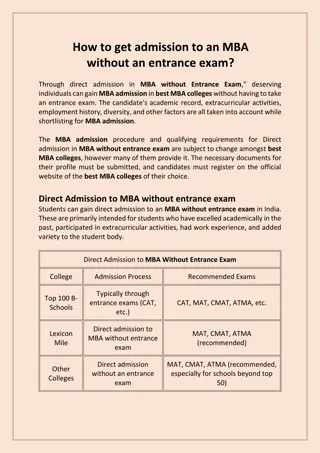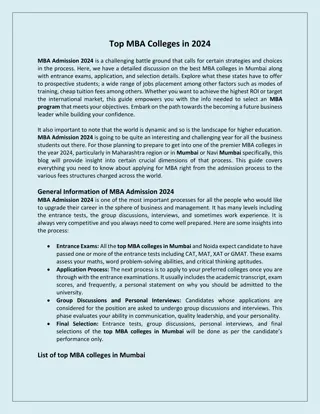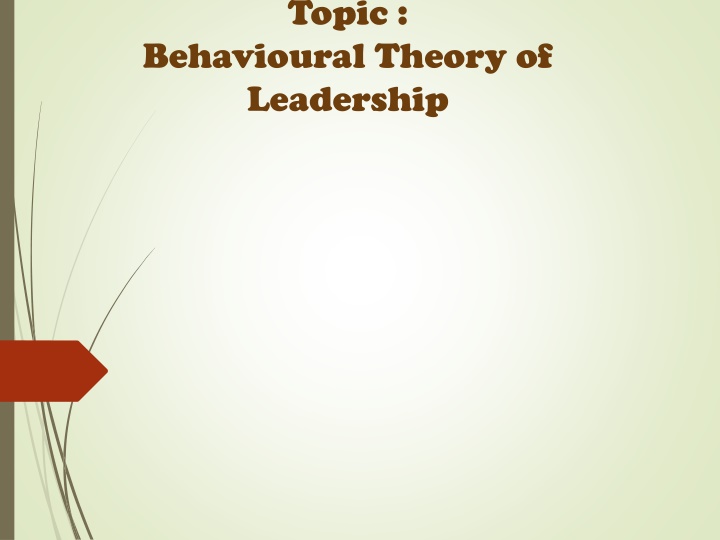
Behavioural Theory of Leadership Styles
Explore the Behavioural Theory of Leadership which emphasizes effective role behavior over traits. Learn about different leadership styles, contributions from behavioural scientists, and Likert's Management Systems. Discover the evolution of leadership patterns from exploitative authoritative to participative styles.
Download Presentation

Please find below an Image/Link to download the presentation.
The content on the website is provided AS IS for your information and personal use only. It may not be sold, licensed, or shared on other websites without obtaining consent from the author. If you encounter any issues during the download, it is possible that the publisher has removed the file from their server.
You are allowed to download the files provided on this website for personal or commercial use, subject to the condition that they are used lawfully. All files are the property of their respective owners.
The content on the website is provided AS IS for your information and personal use only. It may not be sold, licensed, or shared on other websites without obtaining consent from the author.
E N D
Presentation Transcript
Topic : Behavioural Theory of Leadership
Success in leadership depends more on what the leader does than on his traits. The behavioural approach is based on the premise that effective leadership is the result of effective role behavior. There is a dynamic interaction between the leader and the followers, and leaders produce different styles while dealing with the workers.
Many behavioural scientists have attempted to identify appropriate behavioural patterns of leadership styles Some of the important contributions in this regard include Ohio State Studies, Michigan University Studies and Managerial Grid of Blake and Mouton. The behavioural scientists don t concentrate on the traits of leaders; rather they study the activities of leaders to identify their behavioural patterns.
Likerts Management Systems and Leadership Rinses Likert and his associates of the University of Michigan, had conducted extensive survey of management and leadership patterns in a large number of organizations. Within the basic style categories of task orientation and employee orientation, Likert developed a four level model of leadership effectiveness.
These patterns of leadership are termed Systems of management and are assigned numbers from 1 to 4 to indicate the stages of evolution in the patterns of management in terms of leadership styles : System 1 Exploitative authoritative System 2 Benevolent authoritative System 3 Consultative System 4 Participative (Democratic)
System 1 Management(Exploitative authoritative) System 1 managers make all the work related decisions, and order their subordinates to carry them out. Standards and methods of performance are also set by the managers. The communication between the managers and the subordinates is highly formal in nature and downward in direction.
The subordinates have absolutely no say in any matter in the organization. Such managers are highly autocratic who believe in threats and punishment to get the things done. They follow strict supervision over their subordinates.
System 2 Management(Benevolent authoritative) Managers under this system are also autocratic, but they are not fully authoritative. At times, they give some flexibility to the subordinates to carry out their tasks within the prescribed limits. Subordinates who meet or exceed their goals may be rewarded.
Managers adopt patronizing or paternalistic attitude towards the obedient and faithful subordinates. They are very harsh with the subordinates who do not carry out the tasks.
System 3 Management(Consultative) Under this system, managers set goals and issue general orders after discussing them with the subordinates. They take only major decisions and leave the routine decisions to be taken by the subordinates. Subordinates are free to discuss the work-related matters with their superiors. Thus, there exists a two-way communication in the organization
The control system tends to be flexible and goal oriented. More emphasis is placed on rewards than on punishments to motivate the subordinates.
System 4 Management(Participative) This is an ideal system towards which organizations should work. The relations between managers and subordinates are cordial and friendly. The communication system is completely open. The goals are set and work related decisions are taken by the subordinates.
Group approach is adopted in supervision and control. Thus, system 4 presents true democratic styles of leadership. The managers are very supportive in their attitude towards the subordinates. Performance standards are mutually set by the superior and subordinates. They permit self appraisal by the subordinates.
Conclusion Likert sought to measure and evaluate the actual patterns of management in a wide range of organizations within the frame work of his four systems. He found that most individual mangers and organizations fit into one or the other in terms of certain operating characteristics related to such variables as goal setting, decision making, communication, and control.
Likert also sought to relate his systems of management with certain performance characteristics like productivity, quality, wastage, and employee turnover and absenteeism. He found that organizations with System 1 orientation scored very poorly while those oriented with System 4 scored creditably on these performance characteristics.
He strongly recommended System 4 and regarded it as the best way to develop and utilize human assets of the organization. Likert also found many managers and organizations operating in System 2 and 3. For such organizations, he suggested extensive and intensive leadership training at all levels of management so as to move into System 4 management.
References: https://www.iedunote.com/likert-4-management- leadership-styles https://businessjargons.com/likerts-four-systems- management.html https://learnmanagement2.com/Likert.htm https://www.managementstudyguide.com/likerts- management-system.htm


